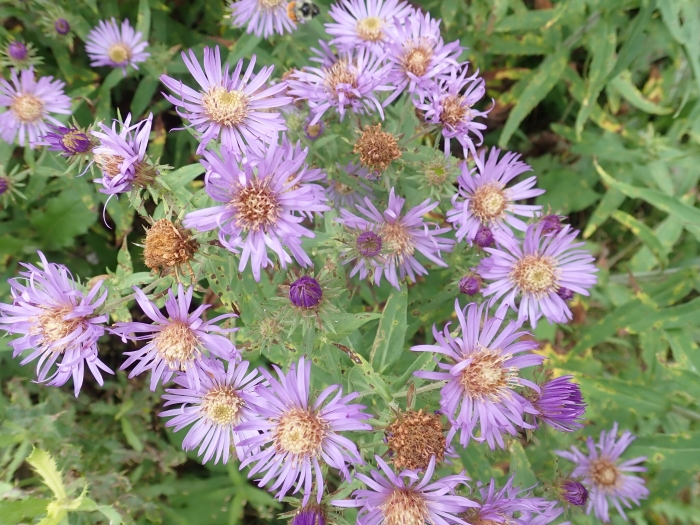Great Northern Aster
(Canadanthus modestus)
Great Northern Aster (Canadanthus modestus)
/
/

Rob Foster
CC BY 4.0
Image By:
Rob Foster
Recorded By:
Copyright:
CC BY 4.0
Copyright Notice:
Photo by: Rob Foster | License Type: CC BY 4.0 | License URL: http://creativecommons.org/licenses/by/4.0/ | Rights Holder: Rob Foster | Publisher: iNaturalist | Date Created: 2022-08-24T14:15:49-07:00 |






















Estimated Native Range
Summary
Canadanthus modestus, commonly known as Great Northern Aster, is an herbaceous perennial native to moist meadows, wetland margins, and riparian zones in parts of Canada (Alberta, British Columbia, Manitoba, New Brunswick, Ontario, Saskatchewan, Quebec, Yukon) and the northern United States (Alaska, Idaho, Michigan, Minnesota, Montana, North Dakota, Oregon, Washington). It typically forms large colonies by spreading via underground rhizomes and can reach a height of 1 to 3 feet. The plant features multiple flower heads with showy pink or purple ray florets surrounding a center of white or yellow disc florets, blooming from late summer to early fall.
Great Northern Aster is valued for its ability to attract pollinators such as bees and butterflies, making it an excellent choice for naturalistic plantings and wildlife gardens. It is also useful for soil stabilization in wet areas due to its extensive root system. In cultivation, it prefers consistently moist soil conditions and can tolerate partial shade to full sun exposure. While generally low-maintenance, it can be susceptible to powdery mildew in overly humid conditions. It is not known to be invasive and does not typically present aggressive root problems.CC BY-SA 4.0
Great Northern Aster is valued for its ability to attract pollinators such as bees and butterflies, making it an excellent choice for naturalistic plantings and wildlife gardens. It is also useful for soil stabilization in wet areas due to its extensive root system. In cultivation, it prefers consistently moist soil conditions and can tolerate partial shade to full sun exposure. While generally low-maintenance, it can be susceptible to powdery mildew in overly humid conditions. It is not known to be invasive and does not typically present aggressive root problems.CC BY-SA 4.0
Plant Description
- Plant Type: Herb
- Height: 1.5-3 feet
- Width: 1-2 feet
- Growth Rate: Moderate
- Flower Color: Purple
- Flowering Season: Summer
- Leaf Retention: Deciduous
Growth Requirements
- Sun: Full Sun, Part Shade
- Water: Medium
- Drainage: Medium
Common Uses
Bee Garden, Butterfly Garden, Low Maintenance
Natural Habitat
Moist meadows, wetland margins, and riparian zones
Other Names
Common Names: Modest Aster, Giant Mountain Aster, Great Northern Aster, Northwestern Sticky Aster, Western Bog Aster, Canada Aster, Few-Flowered Aster
Scientific Names: , Canadanthus modestus, Aster major, Aster majus, Aster modestus, Aster modestus var. major, Aster modestus var. modestus, Aster mutatus, Aster sayianus, Aster unalaschensis var. major
GBIF Accepted Name: